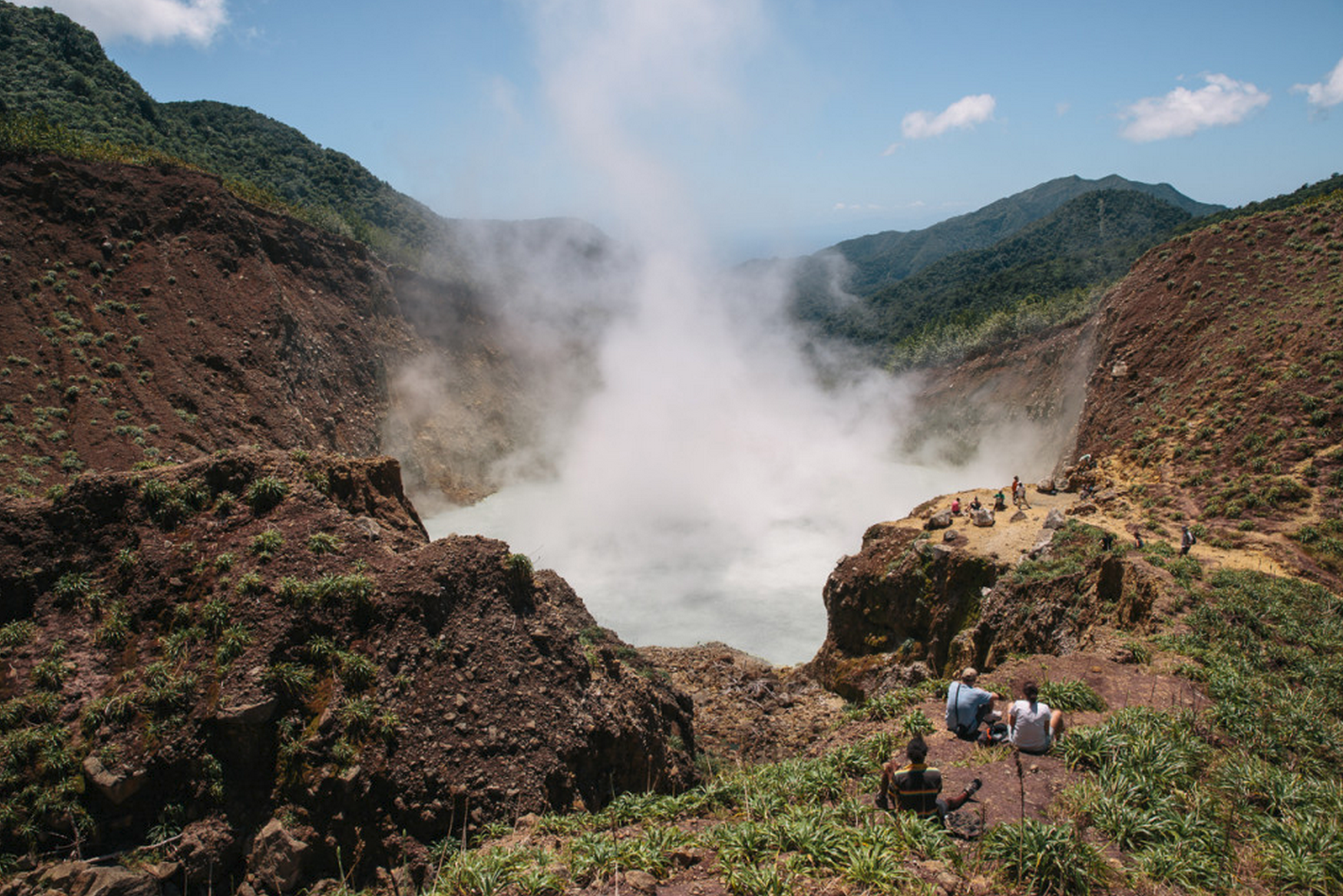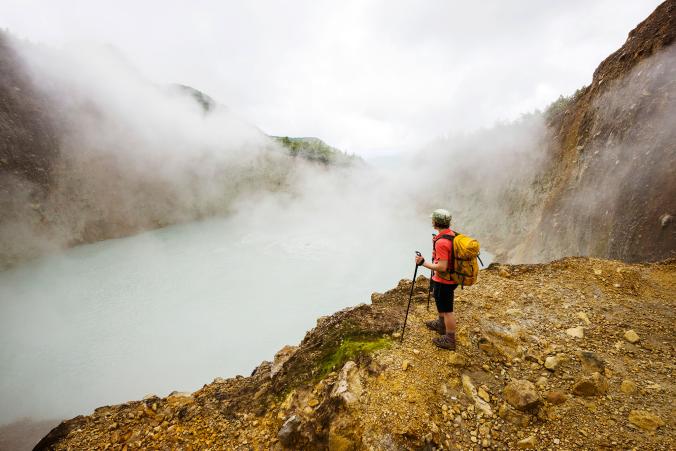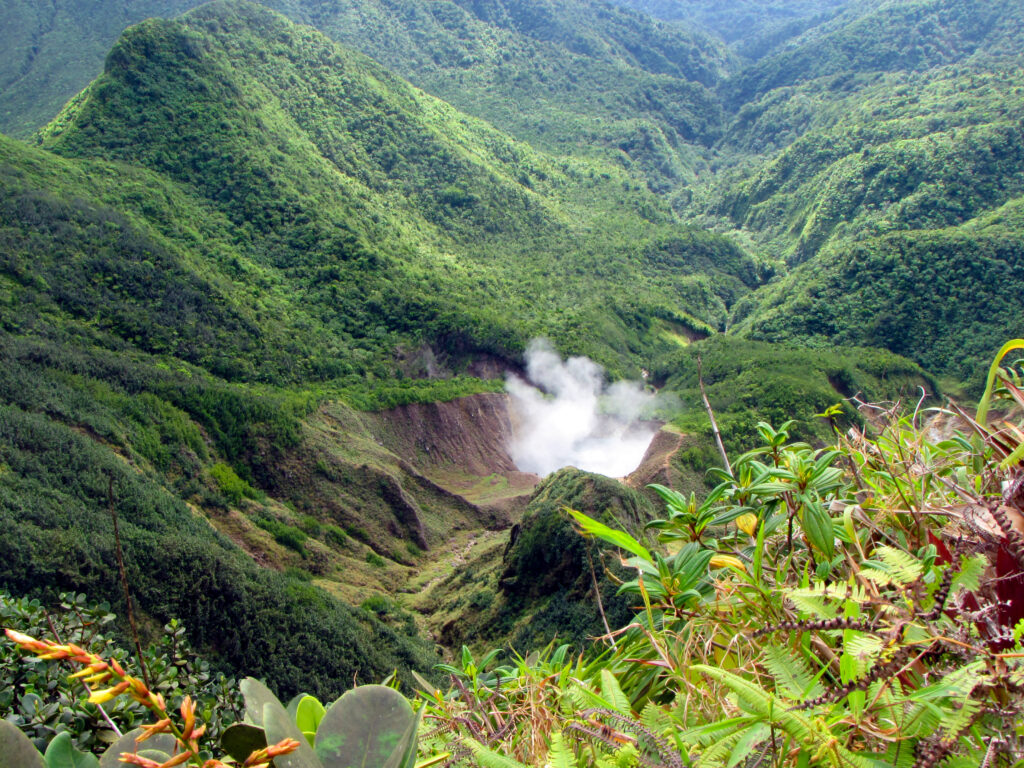
Boiling Lake
Description
The Boiling Lake is a flooded fumarole located in an area near the Valley of Desolation in southern Dominica. With a diameter of about 60 meters and a depth of around 15 meters, it is the second largest lake of its kind in the world (the largest being the “Frying Pan” lake in New Zealand).
Temperatures measured at the edges of this cauldron are typically around 900°C, which is heated by magma lying beneath the surrounding rocks. Since 1876, scientists have occasionally recorded fluctuations in lake activity, water level, and temperatures.
Research says that the water level of the lake fluctuates due to bubbles of volcanic gas rising through the holes in the rock (under the lake). When these gasses are absent, the water is no longer pushed up and the water level falls. Sometimes the gasses are absent because the vents (located below the lake) may be blocked. Another possible cause of the low water levels is a break in the edge of the lake, allowing some of the water to drain away.
Although it raises questions, the drying up of the lake does not necessarily mean that a volcanic eruption will occur. Scientists at the UWI-SRC Center for Seismic Research continually monitor all of Dominica's volcanoes and Boiling Lake, and report any changes in activity to the island's Office of Disaster Management (ODM).
he Valley of Desolation has fifty fumaroles and hot springs. There was a huge explosion that, combined with the constant emission of steam and sulfurous gases, produced an arid landscape that contrasts sharply with the exuberant vegetation of the rest of the island.
Witness of the volcanic activity of the island, in particular with its smoking faults, its fumaroles, its hot sulfurous river and its gray mud.
This valley and its bubbling lake are considered landmarks for Dominica locals and visitors alike. They are part of the Morne Trois Pitons National Park, a UNESCO World Heritage Site since 1997
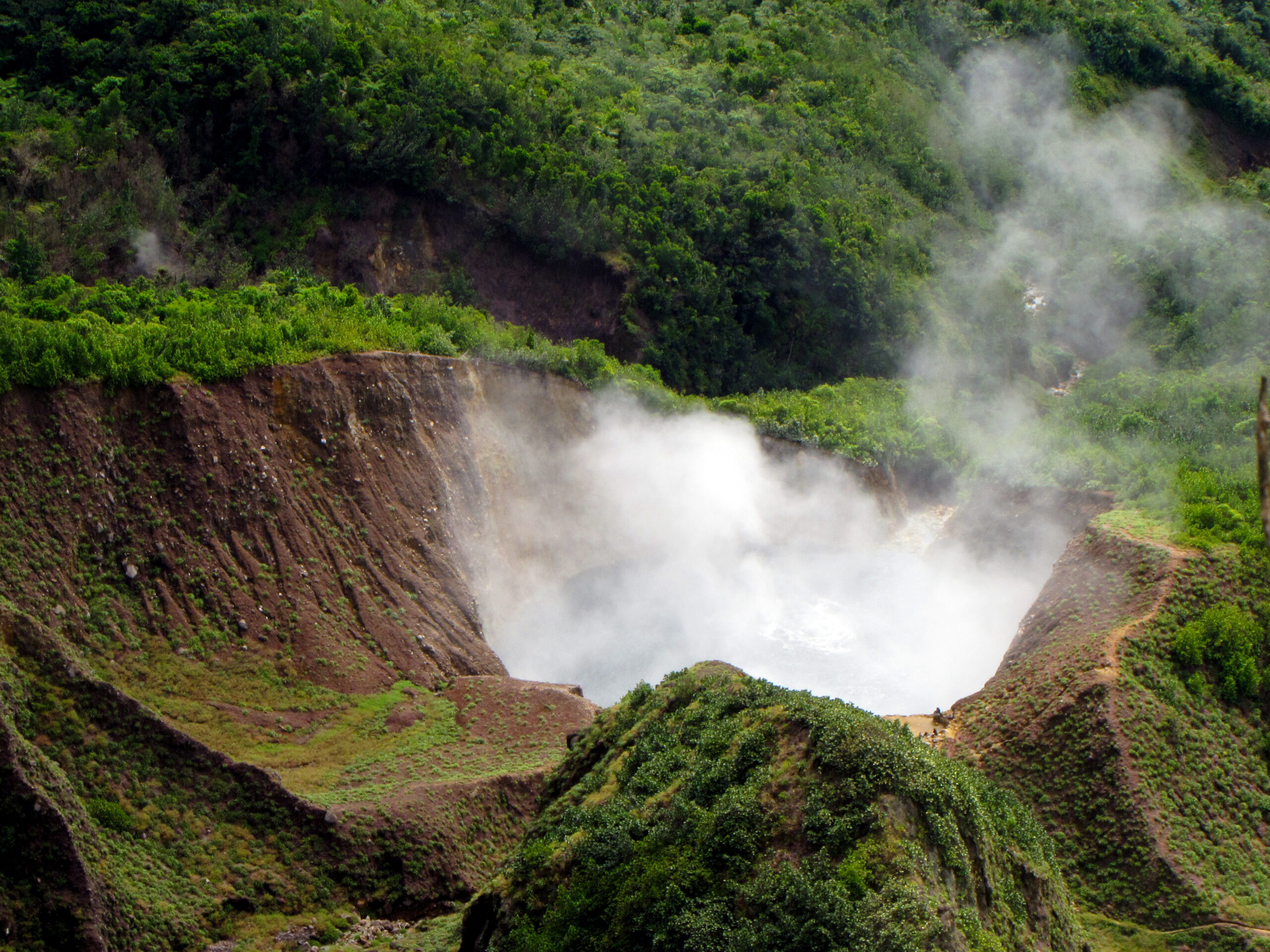
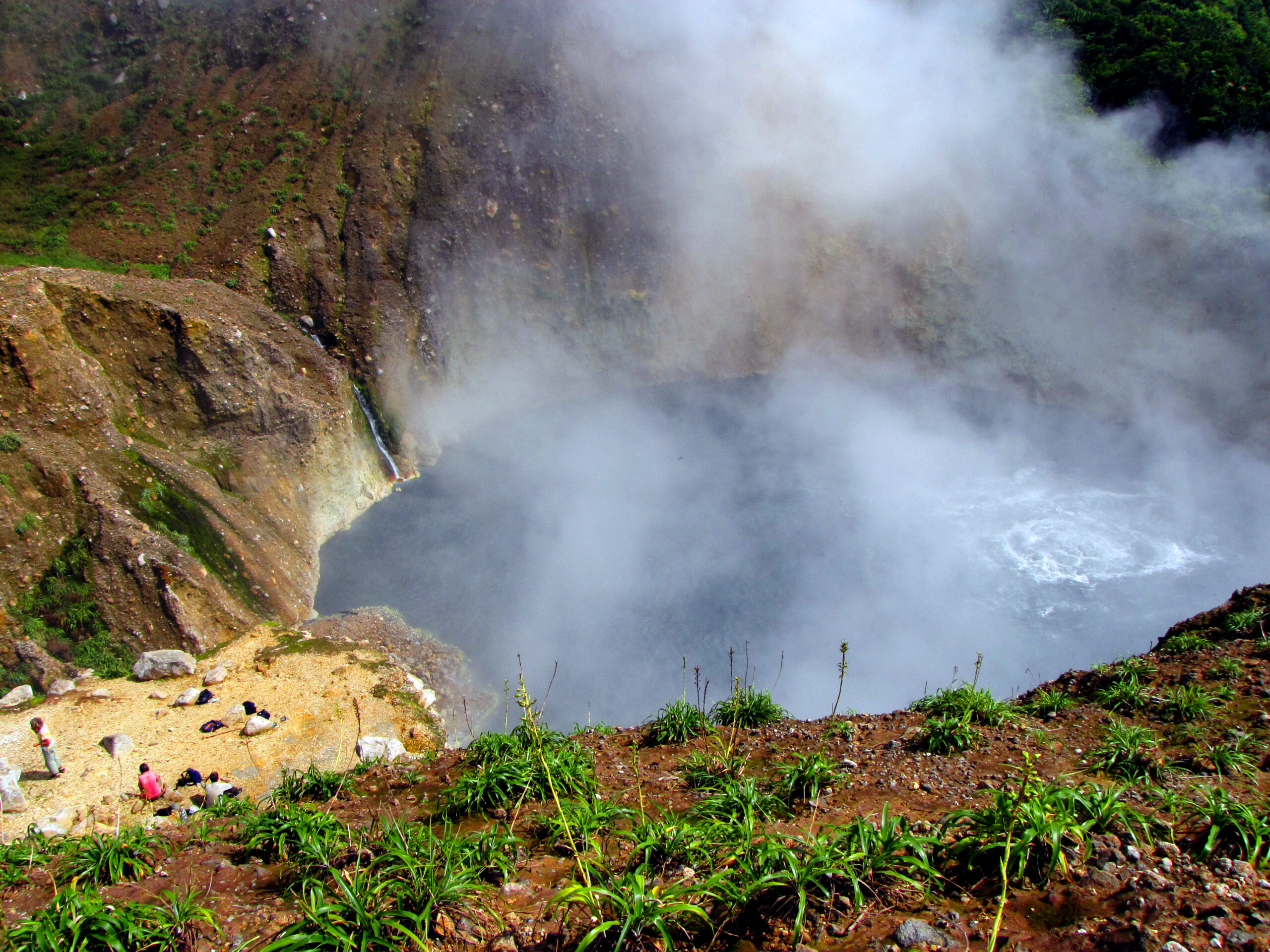
Biodiversity
The region is home to some of the world’s most robust species, including small lizards and insects. Fumaroles are a very common habitat, but one of the least understood among terrestrial geothermal environments.
The hiking route situated in the valley of desolation, is located in a humid forest, so the vegetation is adapted to these climatic conditions. Here inhabits the candlewood (Dacryodes excelsa) as well as “la Clusia major une liane”: LA CLUSIA MAJOR C’EST PAS UNE LIANE. In poorly drained areas different vegetation is found, such as the boarwood (Symphonia globulifera).
Extremely rich, this forest, on the edge of the boiling lake, is home to the species Rondeletia parviflora and the Dominican variety of the Miconia globuliflora
Ecotourism Potential
Extremely rich, this forest, on the edge of the boiling lake, is home to the species Rondeletia parviflora and the Dominican variety of the Miconia globuliflora.
As this is one of the most difficult walks on the island, it is best to discover it accompanied by a guide. This trail offers impressive panoramic views, especially of the island of Martinique. You can also see many rivers, geysers, mud pools, fumaroles and hot springs suitable for bathing.
When the water level of the lake is normal, the visit is generally safe. However, it is recommended that no one go ashore and swimming is prohibite
